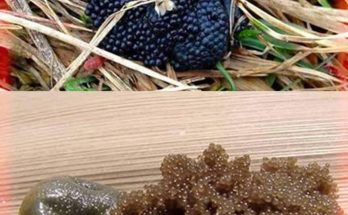Spider plants have been a favorite houseplant for decades. Native to Africa, the plant was first introduced to Europe at the end of the 18th century and was a mainstay in Victorian parlors.1
University of Arkansas System Division of Agriculture. Spider plant.
It’s likely your grandma and mom had one, too, and it’s no mystery why this plant still is popular today: It’s super-easy to grow and tolerates a lot of neglect. Besides being low-maintenance, the spider plant has other benefits that make it a worthwhile addition to your houseplant collection.
Here are some of the benefits of spider plants and why you need one in your collection.
:max_bytes(150000):strip_icc():format(webp)/GettyImages-823655632-85c0768e6cb74bfcad51021a7ed92d5b.jpg)
Perfect for Any Decor
The long, grassy leaves typically are striped white and green or yellow, and it takes its name from the baby plants, which resemble clusters of spiders dangling from long stems. This plant’s graceful arching form makes it a natural for hanging baskets. A full, bushy plant also makes a good tabletop display, or use it as a focal point by placing it in a large pot near the hearth or on a counter or pedestal.
Great for Beginners
If a houseplant could survive being ignored, this is the one! Give it medium to bright light, keep it in a room with average temperatures, and water occasionally, and your spider plant will thrive for years. It’s hardy and tolerant if you forget to water; in fact, it prefers to dry out somewhat between waterings, so it’s ideal if you’re a tad forgetful. Stick your finger in; if it feels wet, wait another day or two before watering. It’s also a good idea to use distilled or rainwater if your tap water is fluoridated; these plants are sensitive to some chemicals in tap water, which may result in brown tips on leaves.
Offsets, or Babies, for New Plants
It’s ridiculously easy to make (free!) new plants from a spider plant. After it sends out the long, wiry stems with tiny star-shaped flowers, it will produce plantlets at the end of each stem. Snip them off when they develop little nubby roots, and place them in a container filled with potting soil. Make sure the pot has drainage holes. Some people prefer to root the plantlet while it’s still attached to the mother plant, but this isn’t entirely necessary. Either method is effective for making new plants.
Safe Alternative Around Pets
Unlike some popular but toxic houseplants such as peace lily and pothos, the spider plant is non-toxic if ingested by cats and dogs, according to the ASPCA.2 However, it’s important to remember that any plant, if eaten in large enough quantities, can cause upset tummies and gastrointestinal distress. If your pet is a nibbler, keep them away from your houseplants—especially cats, who find the dangling spider plant babies quite alluring. If this is an issue in your house, snip off the stems as they form and discard them.
Natural Air Purifier
Ever since a 1989 NASA study that found that plants could remove volatile organic compounds (VOCs) such as benzene and formaldehyde from a sealed chamber, people have believed houseplants can purify indoor air. Spider plant was one of the plants included in this study. However, later the EPA said that because the sample size was small and the conditions controlled, the results don’t really apply to real life (which isn’t a sealed chamber or a controlled environment, after all).
Another more recent study showed that spider plants had a high formaldehyde removal capacity.3 But other research found that the level of VOCs reduced is influenced by the plant species, light intensity, and VOC concentration, so we don’t know how effective spider plants really are as an air-cleaning option.4
Health Benefits
There’s a lot we don’t know yet about how well plants can clean indoor air. However, what we do know is that it never hurts to add live plants to your home. There’s plenty of evidence that supports the positive mental health effects nature and indoor plants can provide, including better sleep, improved mood and happiness levels, stress reduction, and helping us feel less isolated.5 With such potential benefits, it’s worth adding the easy-care spider plant to your home.
Indoor and Outdoor Plants
While these plants love an indoor space with lots of indirect light, they can also thrive outdoors in Zones 9-11 and as annuals in colder regions. Just give them dappled light or partial shade and well-draining soil. In full sun, the plants may sunburn. Spider plants can be used as groundcover and a border around a tree or along a sidewalk. Outdoors, the babies can stay attached to the parent plant. Once the offsets reach the soil, they will develop roots and spread.
Types of Spider Plants
If you’re familiar with spider plants, you likely know the variegated variety. But there are many other types.
- Chlorophytum comosum ‘Bonnie’: This compact variety’s green leaves are curled with a white central stripe. Its flowers are white.
- Chlorophytum comosum ‘Variegatum’: Cream or white leaves have a green stripe and long green stem.
- Chlorophytum comosum ‘Vittatum’: Green leaves feature a white stripe down the center. The plant’s long stems are white.
- Chlorophytum comosum ‘Solid green’: The solid green leaves have no variegation. This variety is less common than variegated species.



